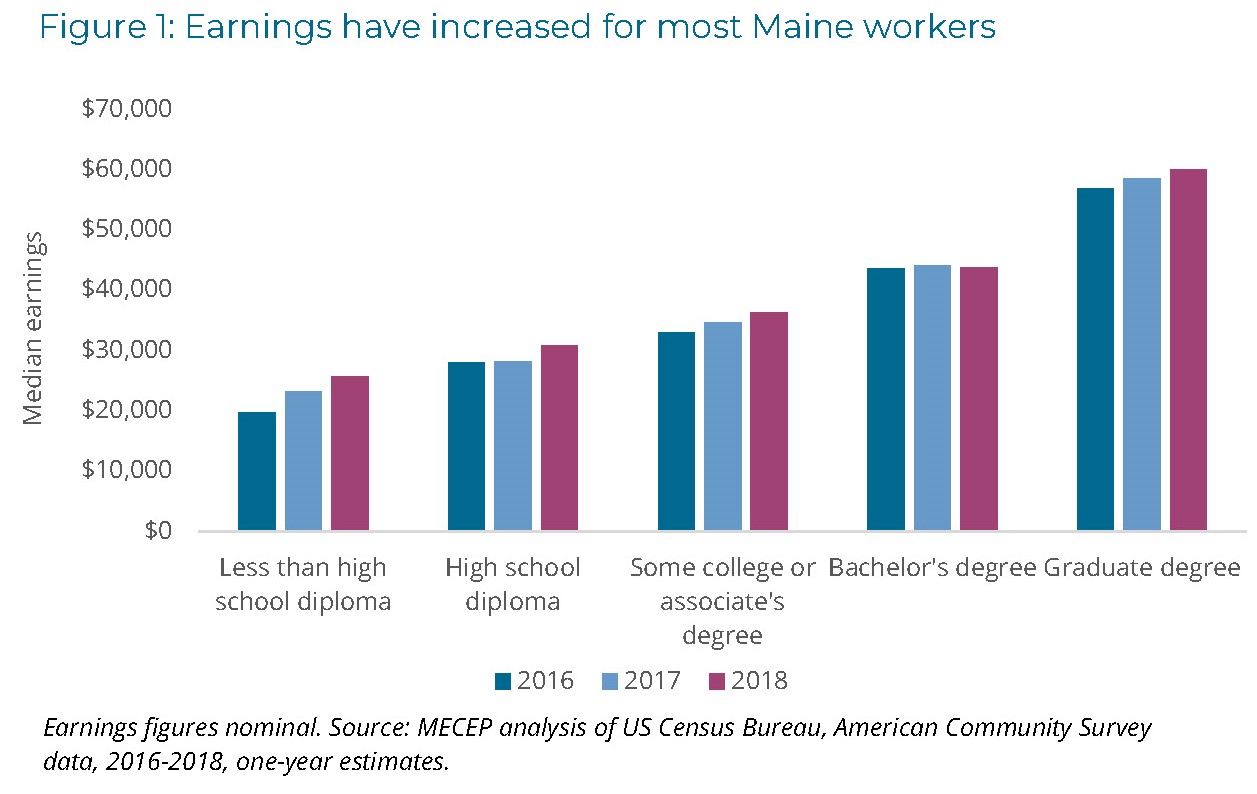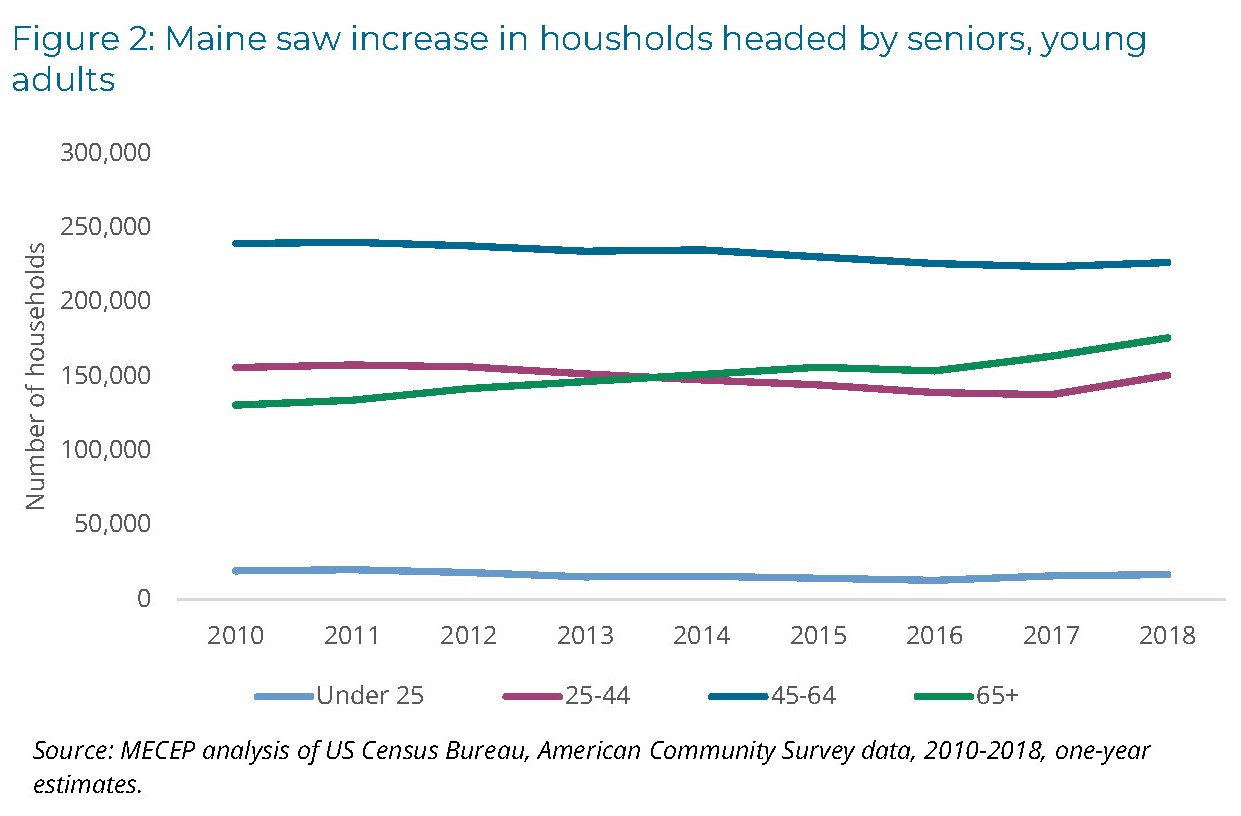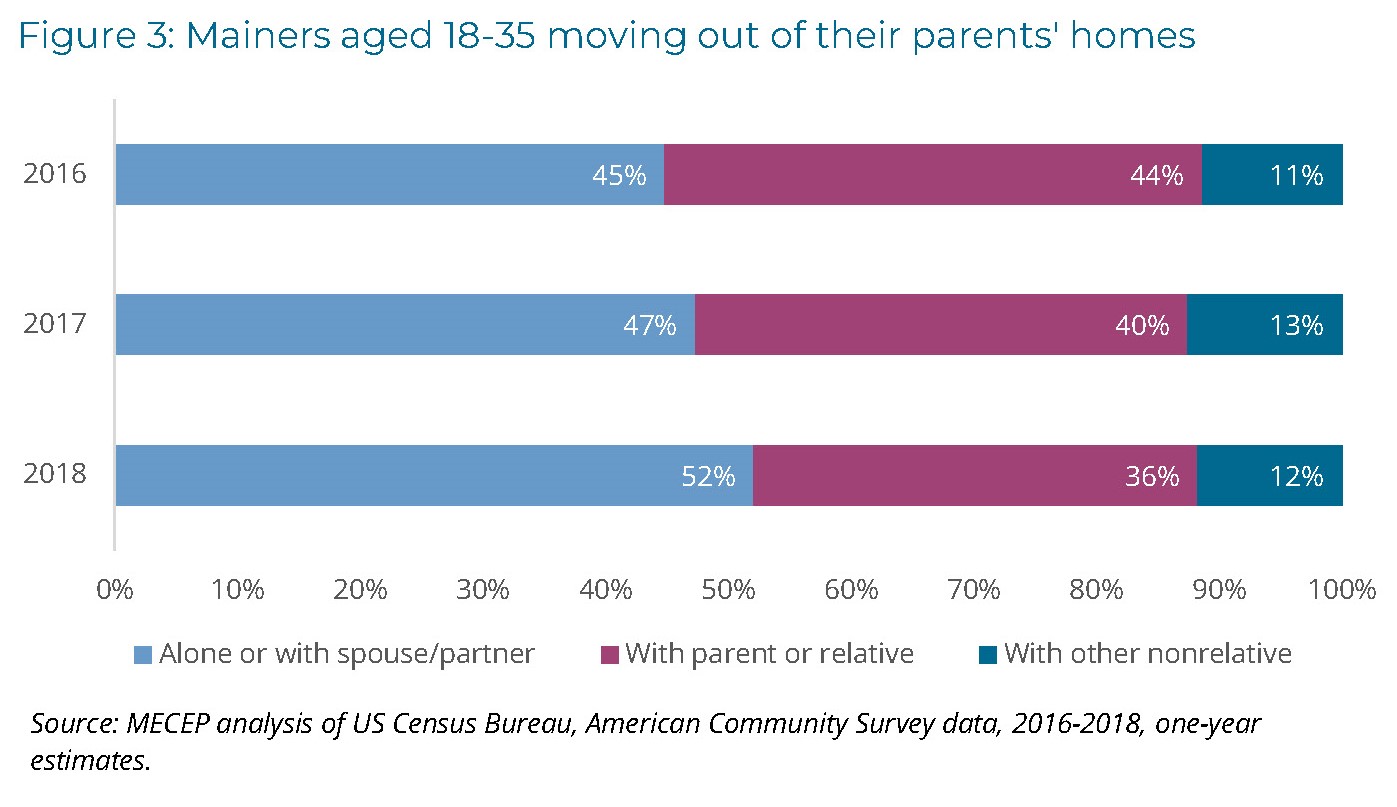The latest round of 2018 data from the census bureau released last week contained two apparently contradictory trends: Household incomes in Maine went down over the previous year, while individual earnings rose. A deeper dive in the data shows that household size has declined, leading to fewer wage earners per household and a lower household income even though individual Mainers are earning more.[1]
According to the Census Bureau’s American Community Survey, median household incomes in Maine fell from $56,277 to $55,602 between 2017 and 2018. That’s a decline of 1.2 percent — the worst performance of any state, and highly unusual in a year when the economy was growing. The Bureau of Economic Analysis reports that Maine’s economy grew by 1.9 percent in real terms over that same period. Adding to the unexpected nature of this decline is the data which has consistently shown increased wages in 2018. The Quarterly Census of Employment and wages found that mean wages grew by 3.3 percent between 2017 and 2018. Monthly employment data shows that more Mainers were employed than in the previous year.
In fact, the ACS data confirms that wages continued to grow in 2018. Median annual earnings, which includes both wages and self-employment income, increased from $31,552 in 2017 to $32,906 in 2018. This increase of 4.3 percent was on par with the national increase in median earnings of 4.9 percent in the same period.
| 2017 | 2018 | % Change | |
|---|---|---|---|
| Median household income | $60,336 | $61,937 | +2.7% |
| Median earnings | $33,646 | $35,291 | +4.9% |
| 2017 | 2018 | % Change | |
|---|---|---|---|
| Median household income | $56,227 | $55,602 | -1.2% |
| Median earnings | $31,552 | $32,906 | +4.3% |
What’s more, the increase in earnings in Maine was found across nearly all educational levels (though workers with a bachelor’s degree had no statistically significant change in earnings). Earnings increased most for workers with the least formal education, consistent with the impact of a rising minimum wage.
 To understand how earnings could increase and still result in lower household incomes, we need to look at changes in household composition between 2017 and 2018. Here, the data shows a remarkable difference. Even though Maine’s population estimate remained static from year to year, the number of households increased from 541,000 to 570,000 in just one year. The average household size decreased from 2.4 people to 2.28 people. (This contrasts with a national trend towards larger households, in the face of increasingly unaffordable housing). In other words, based on the current data household incomes fell, at least in part, because there were fewer earners in each household than the year before. The shift in household composition was so dramatic in Maine that it saw the largest decline in average household size of any state.
To understand how earnings could increase and still result in lower household incomes, we need to look at changes in household composition between 2017 and 2018. Here, the data shows a remarkable difference. Even though Maine’s population estimate remained static from year to year, the number of households increased from 541,000 to 570,000 in just one year. The average household size decreased from 2.4 people to 2.28 people. (This contrasts with a national trend towards larger households, in the face of increasingly unaffordable housing). In other words, based on the current data household incomes fell, at least in part, because there were fewer earners in each household than the year before. The shift in household composition was so dramatic in Maine that it saw the largest decline in average household size of any state.
| 2016 | 2017 | 2018 | |
|---|---|---|---|
| Population | 1,331,479 | 1,335,907 | 1,338,404 |
| Households | 531,660 | 540,959 | 570,307 |
| Average household size | 2.44 | 2.40 | 2.28 |
The ACS data also help us understand what’s behind this big uptick in the number of separate households. Two groups of households saw significant increases in number in 2018 according to the data. The first group were households headed by people age 65 and over. This is a continuation of a multi-year pattern resulting from the aging of Maine’s population. The second group was households headed by Mainers ages 25-44.
This 25-44 year old age bracket includes the Millennial generation, many of whom came of age around the time of the Great Recession of 2008 and have faced economic headwinds as a result. The data shows that 18-35 year-olds in Maine were more likely to live alone or with a spouse or unmarried partner in 2018, and less likely to live with their parents or another relative.
In this context, the decline in median household income is not a symptom of any underlying problem with Maine’s economy. In fact, it may be sign of increasing optimism among a segment of the Maine population, as younger Mainers strike out on their own.
Notes:
[1] National-level surveys like the American Community Survey, from which the household income data comes, are less reliable for small states like Maine, because they rely on extrapolations from a sample of respondents. The resulting datapoints sometimes have a large margin of error, making it hard to compare statistics from one year to the next. The analysis in this blog post represents a likely explanation, based on available data, and examining trends which were statistically significant from 2017 to 2018. Nonetheless, it’s possible that future data releases will allow us to draw more precise or even different conclusions about Maine’s economy.






